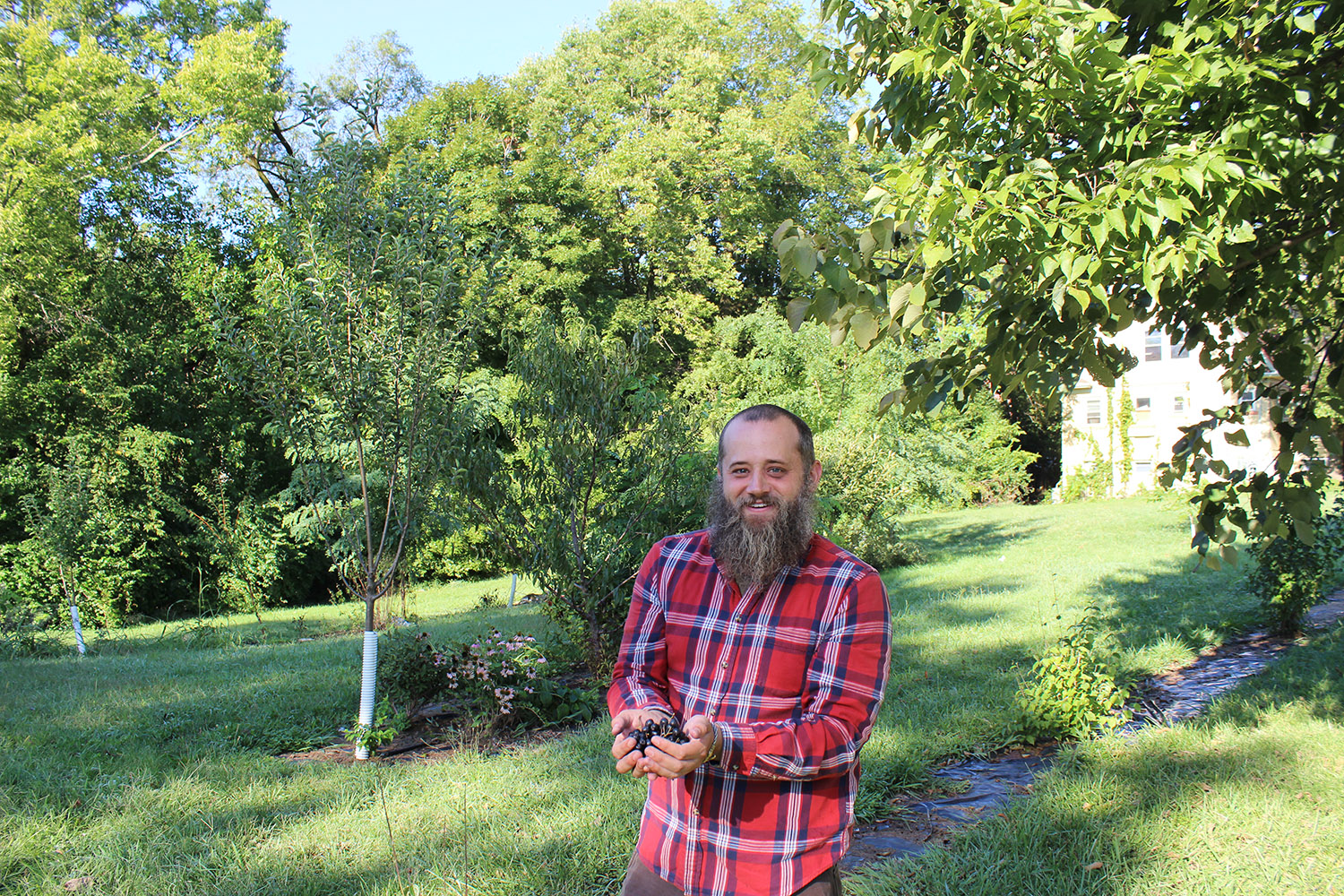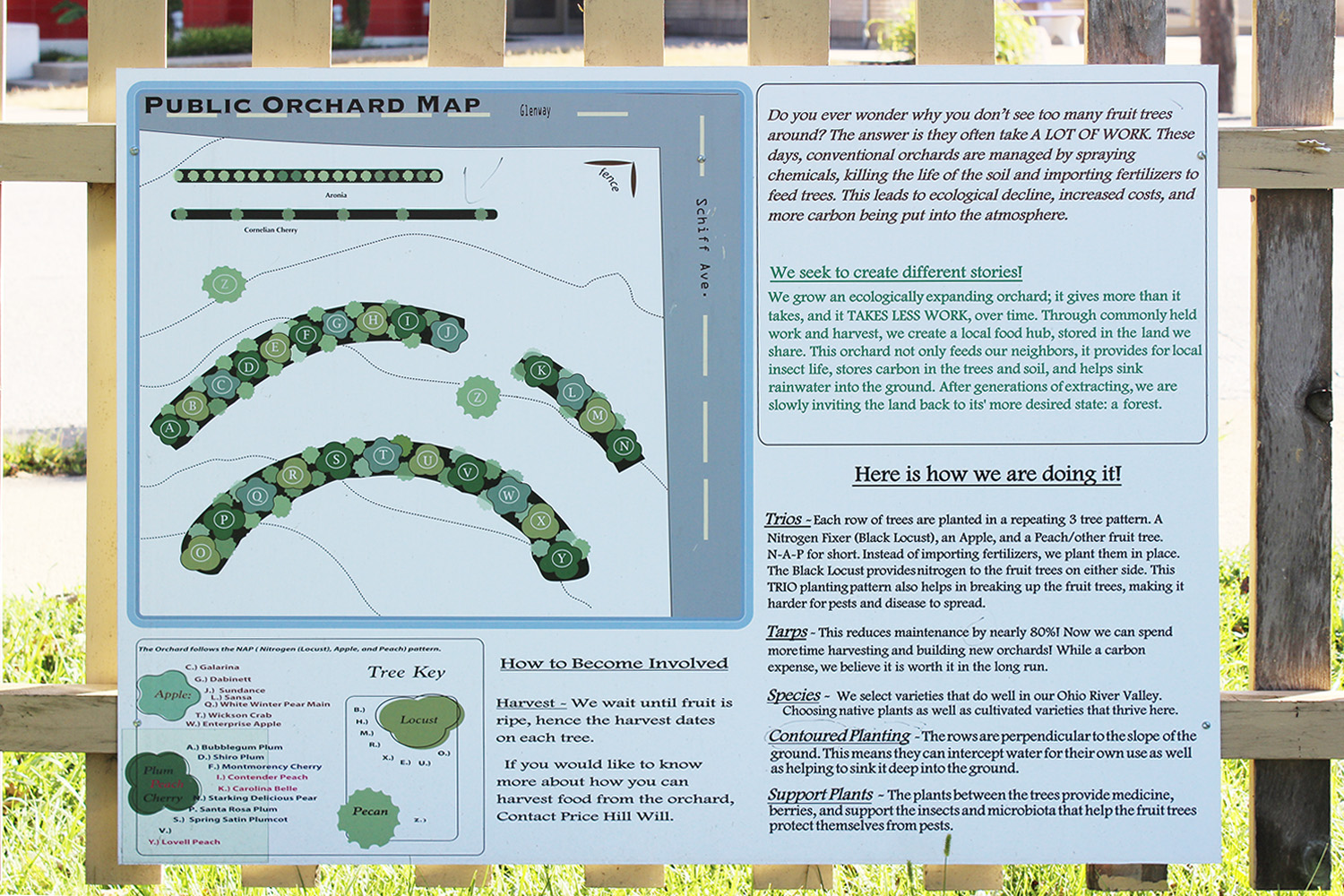Success Story | Urban Orchards
Vacant Lots Transformed into Urban Orchards in Five Cincinnati Neighborhoods
Chris Smyth has been involved in dozens of community garden projects in Cincinnati over the years. Formerly the Sustainability Coordinator at Price Hill Will, he helped the neighborhood community development corporation build seven different community garden projects and installed more than 100 home gardens through the Grow It Forward Program. Price Hill Will has partnered with The Port and Hamilton County Landbank on a number of initiatives ranging from homesteading, creating affordable housing opportunities, to a Percussion Park at the corner of Warsaw and McPherson.

“It’s so important to help children understand our connection to food. Many kids think food comes from Kroger; they don’t realize there’s an entire ecosystem that supports the growth of fruit and vegetables.”
Each lot has its own distinct features – such as sun, shade, slope, soil and water – that Chris takes into account when designing the master plan for each parcel. The nine orchards he’s established so far feature 100 fruit trees, 300 berry plants, 800 perennials/medicinals. After three years of growth, Chris expects the yield to be 6,000 lbs of fruit each year after 2022.
“The work Chris is doing through these orchard projects helps activate vacant lots that may not be redeveloped back into housing,” shared Will Basil, Senior Planning Associate with The Port. “We believe using these lots to grow edible food and educating people about the importance of these types of ecosystems is a good start towards helping shape a more sustainable future.”
On a 1/3-acre at the corner of Glenway Avenue and Schiff Avenue, peach trees planted in Spring 2017 yielded fruit in 2018 and aronia bushes are full of berries in early September 2019. Chris uses a tarp system to keep weeds down and installed the orchard rows on contours because there’s no available water source.
“By spacing the orchard rows and using tarps on the contour of the property, we’ve been able to maximize the water flow,” commented Chris. “The fruit trees are planted in patterns of three: a nitrogen fixer (Black Locust), an Apple and another fruit tree. In between the trees; berries, medicinal plants and pollinators provide habitat for bees and predatory wasps. This helps the orchard be self-fertile and creates a strong ecological immunity to pests.”

Chris has hosted students from the Deaf Institute and many other neighbors at the orchards in Price Hill. “The orchards help create community interaction,” he notes.
While the Landbank has funded his work through the Neighborhood Initiative Program (NIP), from the Ohio Housing Finance Agency, Chris has plans to launch a non-profit called The Common Orchard Project later this year. You can find more information via www.facebook.com/commonorchards. He’d like to identify a 2-acre site in a central location to make it a demonstration space that can educate more children and adults about Permaculture throughout Greater Cincinnati. You can learn more about Chris, his work and plans at http://chrismyth.com.

Learn More About the Gardens + Greens Program
Help us put properties back to productive use. Our gardens + greens program focuses on transforming vacant lots into gardens or community green space. Any party interested in purchase may apply. All applicants must be able to show a viable redevelopment project and the ability to maintain the property.
See our Available Properties